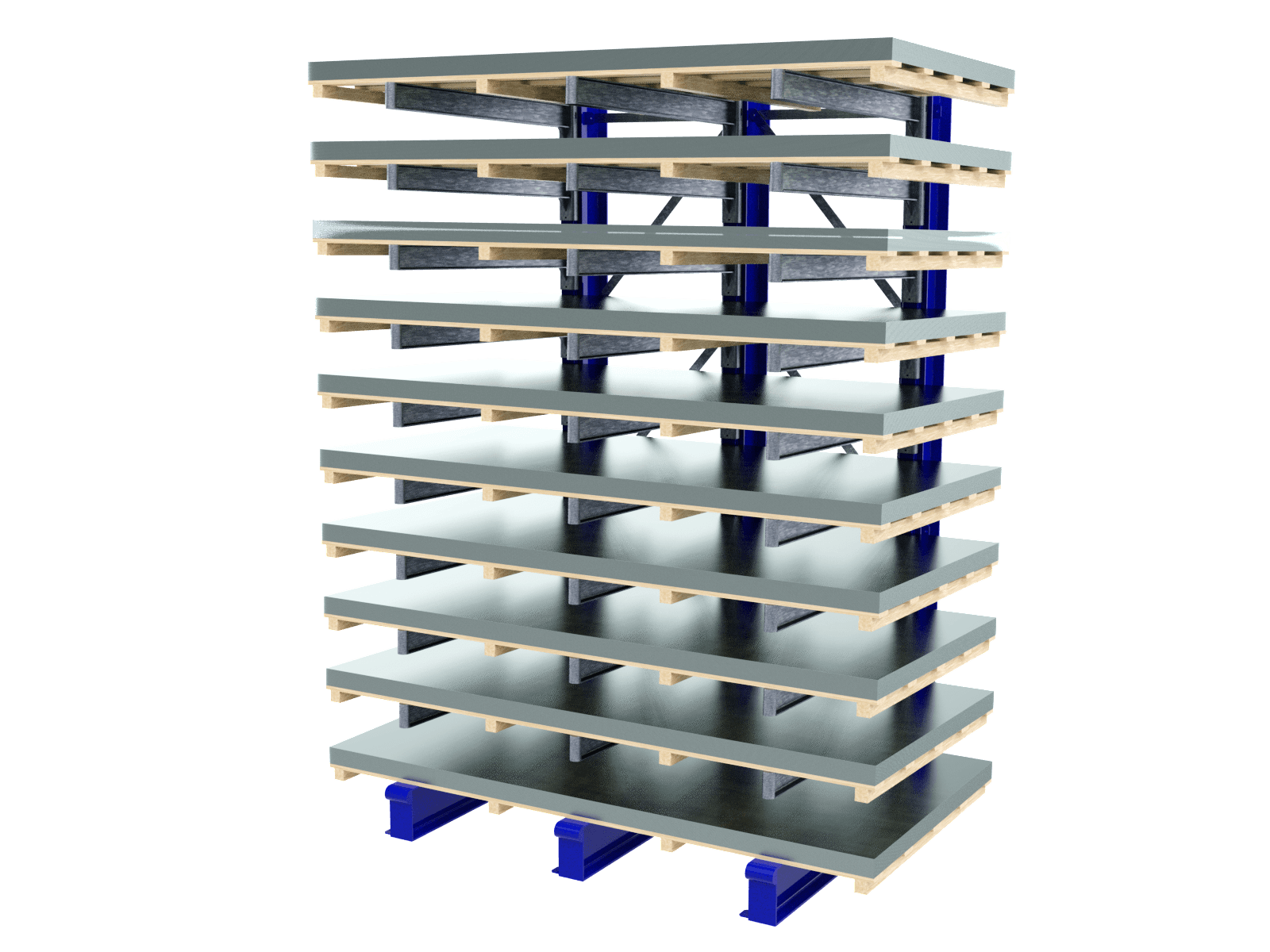What is a depalletiser and what is it used for?
If goods such as sheet metal are stored or retrieved without wooden pallets, a depalletiser is used. With it, the product layers can be stored directly in the corresponding empty or already filled racking system - regardless of whether on pallets, in cassettes, containers or on steel shelves. If the goods are already stored palletised, in sheet metal storage drawers or cassette flats, the depalletiser carefully lifts them off. In this way, the stored goods are transported to dispatch or production on rollers or by forklift truck.
Depalletising or depalletising ensures faster, more efficient, safer and damage-free storage and retrieval and helps to save pallet costs and weight. One example: the PalEx® from storemaster®. With it, the sheet packs can be stored effortlessly and stamped out to remove individual sheets. Its sheet support stamps are made of hard rubber and protect the sheets from pressure marks. The punches can be moved on a diagonal cross, so that the PalEx® accommodates any size of wooden or system pallets as well as sheet metal formats.
What are the different types of depalletisers?
In the "world" of storage technology, a distinction is made between, among other things:
- automatic depalletisers,
- semi-automatic and
- Manual depalletisers
The former operate fully automatically as a machine, largely without the need for warehouse operator intervention. Semi-automatic and manually controlled depalletisers require human intervention. Frequently, palletising and depalletising systems combine mechanical functions with integrated automated, motorised and pneumatic technologies. This allows the sheets to be lifted, lowered and transported carefully and without damage.
Depending on the plant, special depalletisers can also be used in the storage of new or used bottles, glass bottles and cans for filling lines.
What are the advantages of using a depalletiser in industrial production?
Depalletisers increase efficiency, flexibility and reliability during unloading and loading. They ensure that raw materials, such as sheets for cans or machines, are stored more quickly, flexibly, safely and with less labour input, and reach further processing. In addition, the raw materials are more likely to be processed in top condition.
Depalletisers or depalletisers lift, unload and remove even heavy loads in a targeted and careful manner, whether automatically or manually. Fewer workers are needed. In addition, the risk of injury is reduced. Finally, they avoid problems with wooden pallets such as soiling, additional load volume or load weight.
What is the performance of depalletisers and what factors influence it?
How efficient the system is depends, among other things, on whether it is a manual or automatic depalletiser. As well, of course, as the type and size of the loads. An automatic palletiser can handle hundreds of products per hour and work up to five times faster than manual systems.


